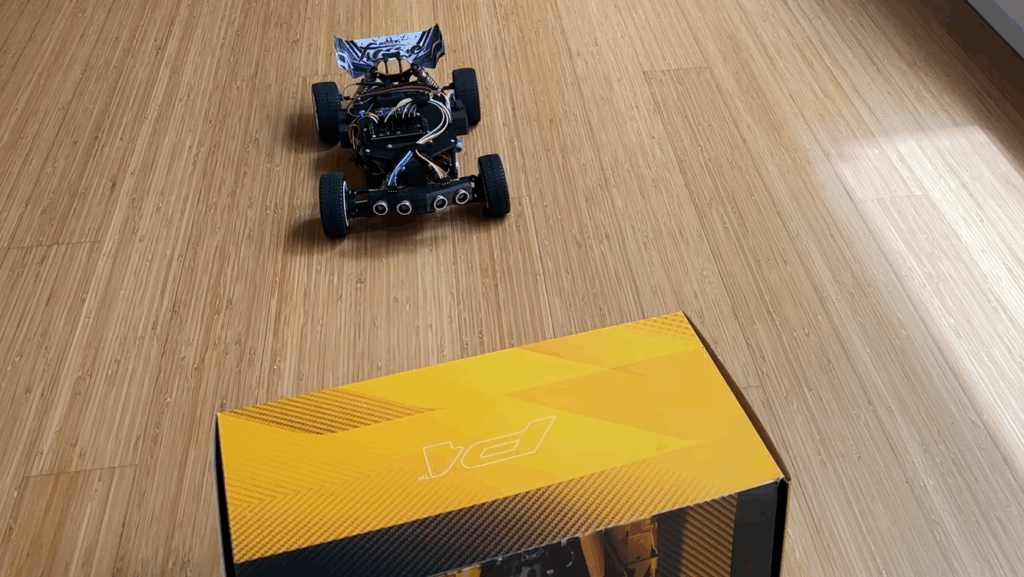In the world of remote-controlled (RC) cars, speed is often the name of the game. However, the thrill of high-speed racing can quickly turn into frustration when these miniature vehicles crash into obstacles. Recognizing this common problem, Narrow Studios has developed a solution: an automatic emergency braking system for RC cars.
The concept behind this innovation is straightforward. By equipping RC cars with a mechanism to detect obstacles and stop before collisions, enthusiasts can enjoy their hobby with reduced risk of damage. The system utilizes ultrasonic sensors as rangefinders to identify solid objects in the car’s path. An Arduino Nano processes the sensor data and sends a pulse-width modulation (PWM) signal to the car’s motor controller, instructing it to brake when a collision is imminent.
Technical Insights and Challenges
The implementation of this automatic braking system involves several technical components. The sensors and Arduino are mounted on the RC car using custom-printed brackets, ensuring stability and precision. Despite its ingenuity, the setup is not without its limitations. The refresh rate of the sensors and the system’s overall response time mean that rapid acceleration towards a wall can still result in a crash.
According to Narrow Studios, further refinements could enhance the system’s reliability. “The current setup is a significant step forward, but there’s room for improvement,” a spokesperson noted. “With faster sensors and optimized software, the braking response could be even more effective.”
Historical Context and Comparisons
Automatic braking systems have been a staple in the automotive industry for years, with major car manufacturers integrating such technology into their vehicles to enhance safety. The adaptation of this concept for RC cars is a testament to the growing sophistication of hobbyist technology. It mirrors the broader trend of incorporating advanced safety features into smaller, recreational devices.
Historically, RC car enthusiasts have relied on manual control and skill to avoid collisions. This new development represents a shift towards automation, potentially changing the landscape of RC car racing and hobbyist projects.
Expert Opinions and Future Implications
Experts in the field of robotics and hobby electronics see this innovation as a promising development. Dr. Emily Carter, a robotics engineer, commented, “Integrating automatic braking into RC cars is an exciting advancement. It not only enhances safety but also opens up new possibilities for autonomous vehicle research at a smaller scale.”
The potential applications of such technology extend beyond recreational use. As the system is refined, it could serve as a testing ground for larger-scale autonomous vehicle technologies, providing valuable insights at a fraction of the cost.
Looking Ahead
As Narrow Studios continues to refine their automatic braking system, the RC car community eagerly anticipates further developments. The current setup, while not perfect, offers a glimpse into the future of RC car technology, where safety and speed coexist harmoniously.
For enthusiasts who frequently find themselves crashing into walls or curbs, this innovation could be a game-changer. As technology continues to evolve, the line between professional-grade safety features and hobbyist projects will likely continue to blur, bringing sophisticated solutions to everyday enthusiasts.
About The Author
 Charleston Police Probe Homicide on King Street, Arrest Repeat Offender
Charleston Police Probe Homicide on King Street, Arrest Repeat Offender Leonel Espinoza’s Eighth-Inning Homer Lifts Pelicans Over RiverDogs
Leonel Espinoza’s Eighth-Inning Homer Lifts Pelicans Over RiverDogs Pepe Coin’s Future: Can It Achieve a 100x Surge Amid Market Dynamics?
Pepe Coin’s Future: Can It Achieve a 100x Surge Amid Market Dynamics? New $9.5M Medical Facility to Transform Health Care Access in Rural Woodruff
New $9.5M Medical Facility to Transform Health Care Access in Rural Woodruff Mastering E-Book Organization: Kindle, Apple, Google, and Nook
Mastering E-Book Organization: Kindle, Apple, Google, and Nook